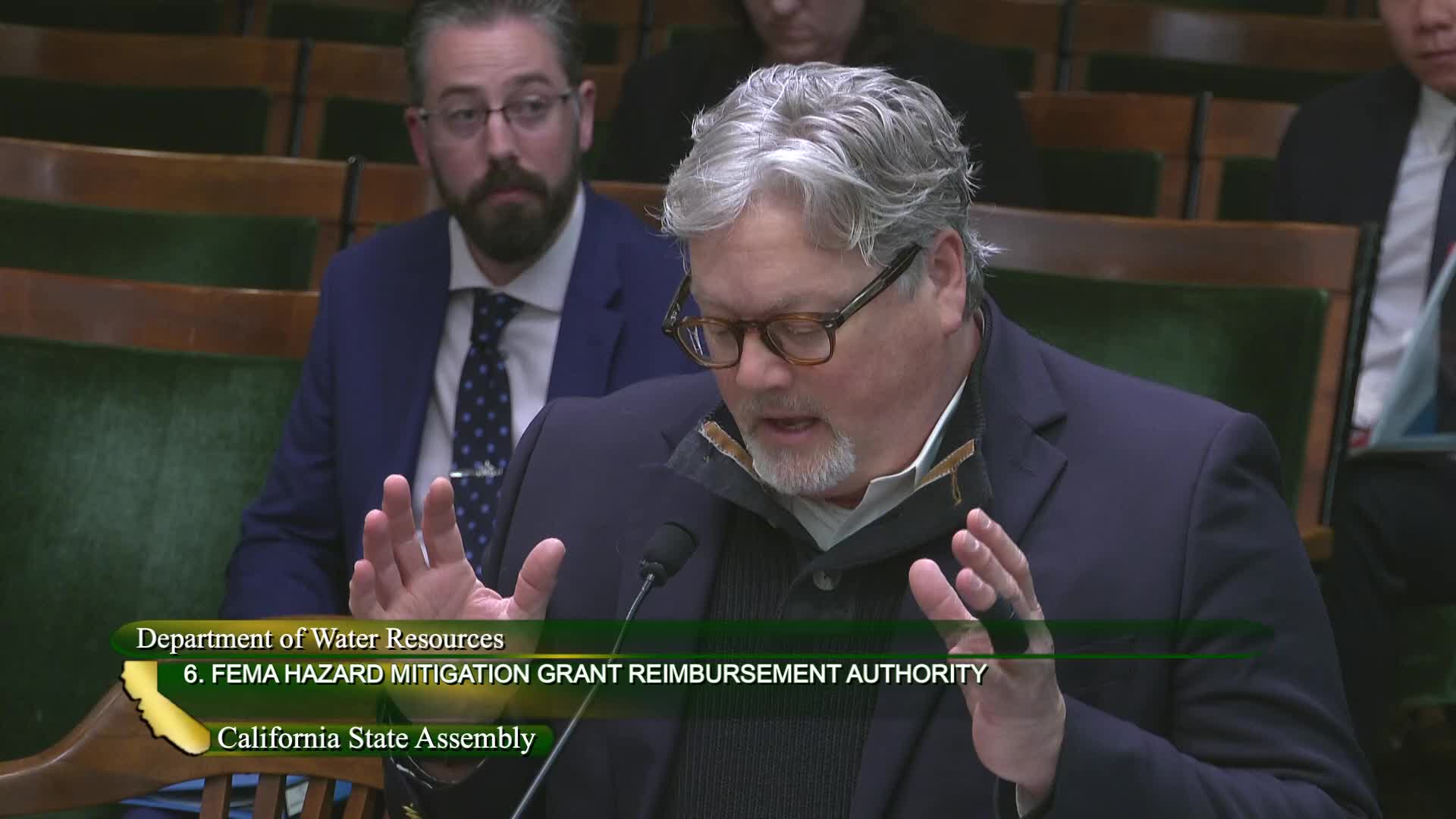DWR pilots post-fire alluvial-fan flood forecasting with FEMA funds to guide emergency response
March 05, 2025 | California State Assembly, House, Legislative, California
This article was created by AI summarizing key points discussed. AI makes mistakes, so for full details and context, please refer to the video of the full meeting. Please report any errors so we can fix them. Report an error »

The Department of Water Resources presented a small budget request tied to FEMA hazard-mitigation funding to pilot post-fire alluvial-fan flood forecasting in three basins: a Mono County basin, a basin in Monterey County and an alluvial-fan area in northern Los Angeles County (Angeles National Forest).
DWR described technical work completed to date: LIDAR mapping, soil characterization by the California Geological Survey and development of hydrologic models to translate storm intensities into likely alluvial-fan responses. The near-term objective is to pair these models with focused NOAA radar observations during storms so agencies can issue targeted emergency messaging and direct response resources when short-duration heavy precipitation is likely to trigger debris flows or fan flooding.
DWR said the pilots aim to "truth" the models during actual storm events and evaluate whether the approach can be scaled. Staff noted potential dependency on federal radar and monitoring capacity and acknowledged that federal staffing disruptions could complicate data streams. The pilot is structured as research-and-development to support operational forecasting tools for emergency managers.
Why it matters: post-wildfire landscapes are more prone to rapid debris-flow and alluvial-fan flooding. Site-specific, near-real-time forecasts could meaningfully improve evacuation and emergency-response timing after fire events.
Next steps: DWR will continue the pilots, coordinate with NOAA to test radar-based triggers, and seek additional FEMA hazard-mitigation funds for broader mapping if pilots validate the approach.
DWR described technical work completed to date: LIDAR mapping, soil characterization by the California Geological Survey and development of hydrologic models to translate storm intensities into likely alluvial-fan responses. The near-term objective is to pair these models with focused NOAA radar observations during storms so agencies can issue targeted emergency messaging and direct response resources when short-duration heavy precipitation is likely to trigger debris flows or fan flooding.
DWR said the pilots aim to "truth" the models during actual storm events and evaluate whether the approach can be scaled. Staff noted potential dependency on federal radar and monitoring capacity and acknowledged that federal staffing disruptions could complicate data streams. The pilot is structured as research-and-development to support operational forecasting tools for emergency managers.
Why it matters: post-wildfire landscapes are more prone to rapid debris-flow and alluvial-fan flooding. Site-specific, near-real-time forecasts could meaningfully improve evacuation and emergency-response timing after fire events.
Next steps: DWR will continue the pilots, coordinate with NOAA to test radar-based triggers, and seek additional FEMA hazard-mitigation funds for broader mapping if pilots validate the approach.
View full meeting
This article is based on a recent meeting—watch the full video and explore the complete transcript for deeper insights into the discussion.
View full meeting
